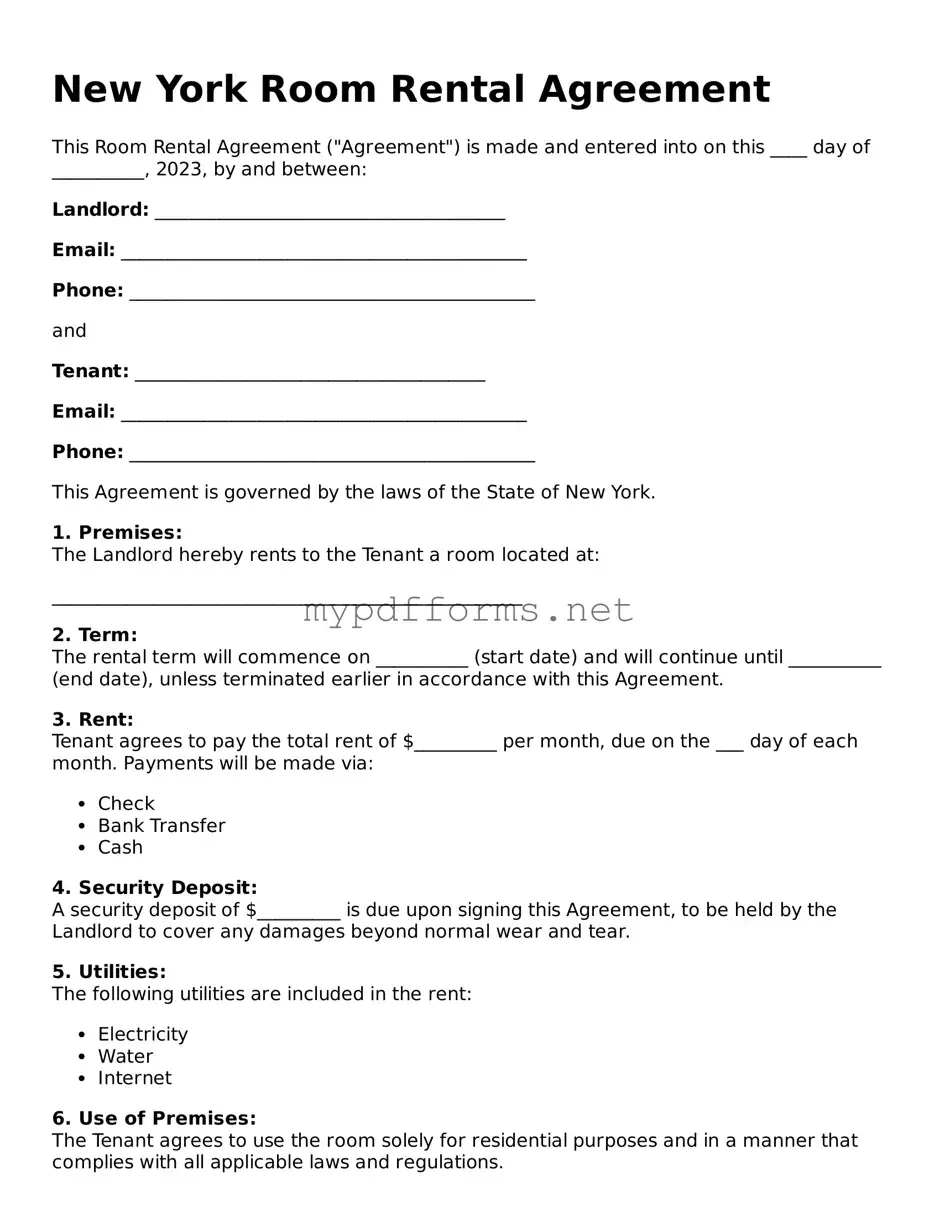The Lease Agreement is a common document that shares similarities with the New York Room Rental Agreement. Both documents outline the terms and conditions for renting a property. They specify the duration of the rental period, payment details, and responsibilities of both the landlord and tenant. While a lease often covers an entire property, a room rental agreement typically focuses on a single room within a larger dwelling, making it more specific to shared living situations.
The Sublease Agreement is another document that resembles the Room Rental Agreement. It allows a current tenant to rent out their leased space to another individual. Like the Room Rental Agreement, it includes terms regarding rent payment, duration, and responsibilities. However, the sublease agreement requires the original tenant to maintain their obligations to the landlord, which may not be a concern in a standard room rental agreement.
The Rental Application is also similar to the Room Rental Agreement, as it is often used in the rental process. This document collects information from potential tenants, including personal details, rental history, and references. While the Room Rental Agreement formalizes the rental relationship, the rental application helps landlords assess whether a prospective tenant is a good fit for their property.
For those seeking additional resources related to rental agreements, it is essential to explore the available documentation that ensures clarity and legality in various rental situations, including the Illinois Forms which can be a valuable part of managing rental arrangements and associated legal responsibilities.
The Move-In Checklist can be compared to the Room Rental Agreement as well. This document is used to record the condition of the rental space before a tenant moves in. It helps both parties agree on the state of the property, which can prevent disputes later on. While the Room Rental Agreement sets the terms of the rental, the move-in checklist focuses on the physical condition of the room being rented.
